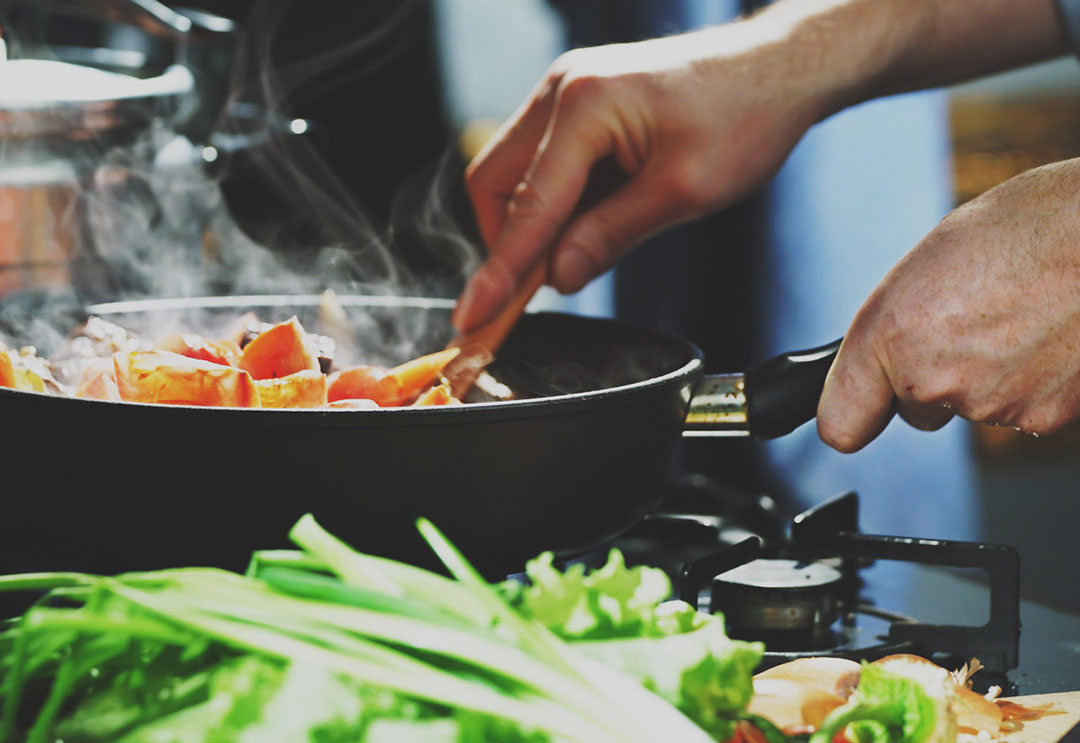By Christine Fitzgerald, Regional Director of Nutrition
So you added a bit more kale into your life because you’re trying to eat healthier, but you’re not getting the results you want — what gives? If the food you’re eating is “dead” — i.e. overcooked or over-processed — you aren’t going to get much energy, brain power, or muscle-building nutrients from it. When your body doesn’t get enough of the nutrients it needs, it’s called malnutrition, and it can lead to a variety of health problems that affect your weight, digestion, skin, bone growth, and even mental health. The good news is that you can prevent nutritional deficiencies by following a few simple tips.
1. Stop Boiling Vegetables
When you boil vegetables, critical nutrients are lost. The best way to prepare vegetables is to steam or sauté them at a low cooking temperature.
2. Stop Eating Salad with Fat-Free Dressing
Sugar takes the place of the fat in low-fat and fat-free dressings. This is not good for your weight or blood sugar. In addition, many vegetables are fat-soluble which means you have to eat fat with them to get all of the nutrient value. The best thing to do is to use a simple oil and vinegar combination that you create yourself such as olive oil and balsamic vinegar. You can also add avocado or egg to your salads.
3. Buy a Whole Head of Broccoli Instead of Florets
For easy preparation, broccoli is often cut into florets. Unfortunately, this causes nutrient loss in a big way. The rule of thumb is to get broccoli from your farmer’s market, or “locally grown” at your local health food store in its whole-head form.
4. Stop Eating Potatoes Right After Cooking Them
First of all, don’t eat white potatoes often, as their simple sugars are rapidly converted to glucose which raises insulin levels and can devastate your health. But if you do choose to eat them, make sure you chill them for at least 24 hours after cooking. This converts the starch into a type that’s digested slower and turns this high-glycemic vegetable into a low-glycemic one.
5. Don’t Discard the Cooking Liquid From Beans
When you cook dried beans from scratch, the cooking liquid will hold much of the nutrients after the beans are ready. One trick is to let the beans sit in the liquid for about an hour after cooking to help them reabsorb some of the lost nutrients. Cooking beans in a pressure cooker may also preserve more nutrients than cooking beans using other methods.
6. Buy Organic
If you want to purchase the most nutritious produce for your family, opt for organic. Organic fruits and vegetables can contain anywhere from 18-69 percent more antioxidants than conventionally-grown varieties.
7. Mind the Cooking Temperature
The higher the temperature that you use to cook your food, the more damage you’ll do to it. Induction burners are the most efficient way to heat and cook food. Also, when cooking eggs, don’t scramble them. Scrambling eggs oxidizes cholesterol and damages fats and nutrients. If possible, eat your eggs poached.
8. Fresh Over Frozen
Use fresh, seasonal vegetables instead of frozen whenever possible. Season with salt and add generous amounts of butter and your kids will love them. Steam vegetables (like broccoli, asparagus, carrots, and cauliflower) instead of boiling, which leaches vitamins and minerals.
9. Eat What’s In Season
Eating produce in season that is grown locally ensures you get the most flavor and nutritional value, and it’s oftentimes more affordable. When foods are preserved and shipped from far away, the process of maintaining freshness causes the foods to lose flavor.

Meet Christine Fitzgerald
Christine Fitzgerald is a two-time published author, a certified nutritionist, and holds a Master’s in Nutrition. Christine specializes in hormone education, testing, and balance; weight management; athletic performance; and recovery. She holds quarterly nutrition seminars across all ClubSport clubs.







